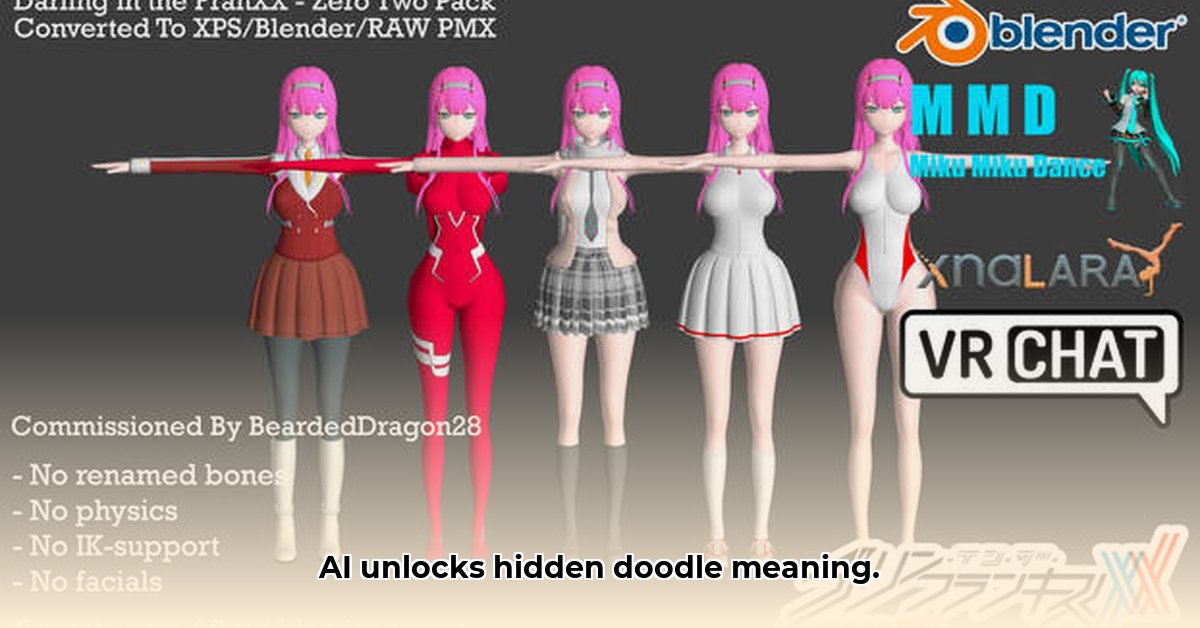
dlraw to: A Deep Dive into AI Doodle Recognition
How can a computer understand the chaotic beauty of a child's drawing? It's a surprisingly complex challenge. A simple circle, for instance, can manifest in countless variations depending on the artist. This article explores the fascinating world of AI-powered doodle recognition, focusing on Google's QuickDraw project and the intriguing, yet currently inaccessible, dlraw to dataset. We'll examine existing successes, limitations, and potential future advancements in this field. The implications extend far beyond casual games, impacting education, design, and even our understanding of human creativity.
Wouldn't it be amazing if AI could understand even the most abstract doodles? This is the ultimate goal. The current state-of-the-art, however, reveals both impressive achievements and significant hurdles to overcome.
QuickDraw: A Global Doodle Experiment
Google's QuickDraw project is a monumental undertaking. Millions of doodles from users worldwide have fueled the training of powerful AI systems capable of identifying various drawings. The AI's ability to correctly guess even wobbly sketches is impressive. However, QuickDraw isn't perfect. It struggles with unusual styles or ambiguous doodles—a testament to both the power and limitations of current AI. This highlights the crucial role of data and advanced techniques in enhancing AI's capabilities. Just imagine the breakthroughs possible with more comprehensive datasets and sophisticated algorithms!
The Enigmatic dlraw to Dataset: An Untapped Resource
The dlraw to dataset presents an intriguing puzzle. Limited access to this dataset hampers comprehensive comparisons of different doodle recognition methods. Essentially, a key ingredient in unlocking the full potential of AI doodle recognition remains elusive. This situation is akin to baking a cake with a missing ingredient: the final product might be edible, but it won't reach its full potential. The promise is there, but accessing and analyzing the dlraw to data is critical for realizing it.
Lessons from QuickDraw's Public Successes
Despite the absence of dlraw to information, QuickDraw offers valuable insights. It showcases the power of neural networks, AI systems inspired by the human brain, to process messy, unstructured data. The iterative nature of AI training, where the system continuously improves through practice, is clearly demonstrated. This is like learning to ride a bike—it takes practice, and you'll likely fall many times before succeeding. However, a deeper dive into QuickDraw's success requires more precise performance metrics, revealing specific accuracy rates for different doodles and providing a clearer picture of its strengths and weaknesses.
The Future of Doodle Recognition: Beyond the Basics
The quest to refine AI doodle recognition continues with multiple promising avenues for advancement:
- Smarter Algorithms: Developing more advanced neural network architectures and refining training methods are crucial, mimicking the human brain's intricate learning process.
- Data Enrichment: Expanding datasets, ideally including the elusive dlraw to data, will significantly boost accuracy. More data is essential for more powerful AI systems.
- Robust Testing: Comprehensive testing across various doodle styles is essential to ensure the AI's reliability and adaptability. This is vital to guarantee broad applicability, rather than focusing only on a specific range of drawings.
Who Benefits from Enhanced Doodle Recognition?
Improvements in AI doodle recognition extend far beyond simple games. Multiple industries stand to benefit:
- Educators: Interactive learning tools, customized education plans, and automated feedback on student artwork.
- Developers: Intuitive software interfaces and innovative assistive technologies for individuals with disabilities.
- Designers: AI-assisted design tools to expedite the design process and foster increased creativity.
- Researchers: Deeper understanding of human creativity and cognitive processes.
Navigating the Risks: Addressing Potential Challenges
Like any powerful technology, AI-powered doodle recognition faces potential challenges:
- Data Bias: The AI might inherit biases present in the training data, potentially misinterpreting doodles from certain cultures. Careful curation of diverse and representative datasets are crucial.
- Accuracy Issues: Ambiguous doodles might lead to misinterpretations. Developing more robust algorithms is an absolute must.
- Overspecialization: The AI might excel on training data but struggle with new, unseen doodles. Regularization techniques are essential to address this issue.
The journey toward perfecting AI-powered doodle recognition is ongoing. Access to datasets like dlraw to, coupled with relentless research and rigorous testing, will be paramount in achieving its full potential. This quest to interpret human creativity using AI is a challenging yet incredibly promising journey.
How to Improve Google QuickDraw Doodle Recognition Accuracy
Google's Quick, Draw! dataset poses a unique challenge: teaching computers to recognize the often-messy and highly variable strokes of human doodles. This section explores effective approaches and strategies for improving accuracy.
Deep Learning's Powerful Stroke
Deep learning architectures, notably DenseNet, have significantly advanced Quick, Draw! recognition. DenseNet's unique interconnected layers enable it to learn intricate patterns from noisy data, resulting in impressive accuracy—one study achieved a Leaderboard score of 0.925 using a DenseNet121 model. However, the inherent inconsistency of doodles remains a challenge.
Traditional Computer Vision: A Complementary Approach
Traditional computer vision methods, utilizing techniques like HOG, LBP, and SIFT/SURF, provide a valuable baseline. While less accurate than deep learning, they offer a different perspective and are often computationally less demanding.
Strategies for Improvement: A Multifaceted Approach
Improving doodle recognition hinges on addressing data variability:
- Advanced Data Augmentation: Expanding datasets with synthetic doodles or GAN-generated images to encompass a broader range of styles.
- Hybrid Models: Combining deep learning with traditional feature extraction for a robust system.
- Explainable AI (XAI): Understanding model predictions to uncover biases and areas for improvement.
- Cross-Dataset Training: Training on multiple handwriting datasets to enhance generalization.
Computational Resources: A Necessary Consideration
Deep learning, such as with DenseNet, requires significant computational resources. Traditional methods offer a less demanding, though potentially less accurate, alternative, especially valuable for researchers with limited resources.
The quest to improve AI doodle recognition is far from over. Continued research and access to resources are critical. The potential rewards, however, are immense.